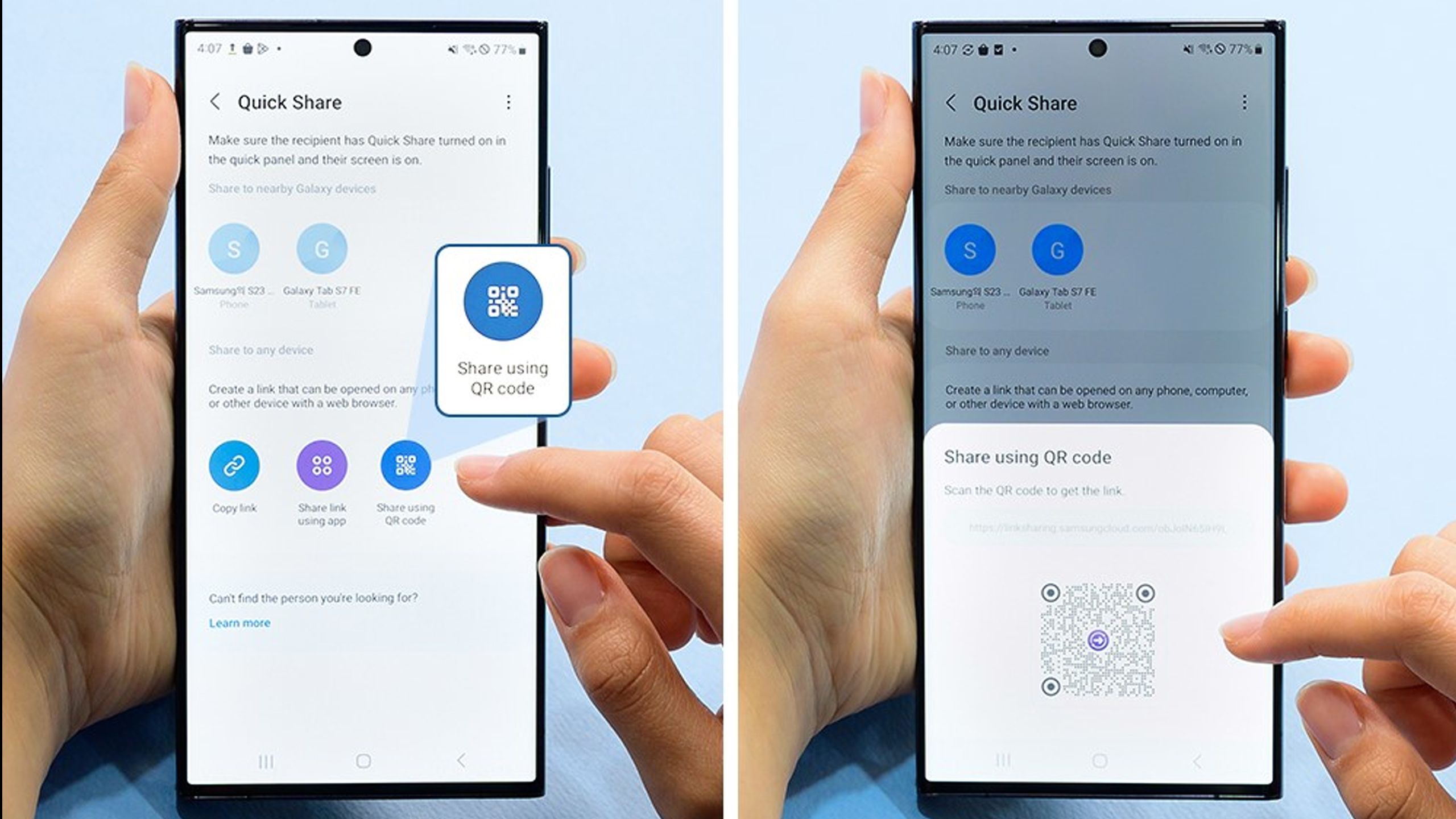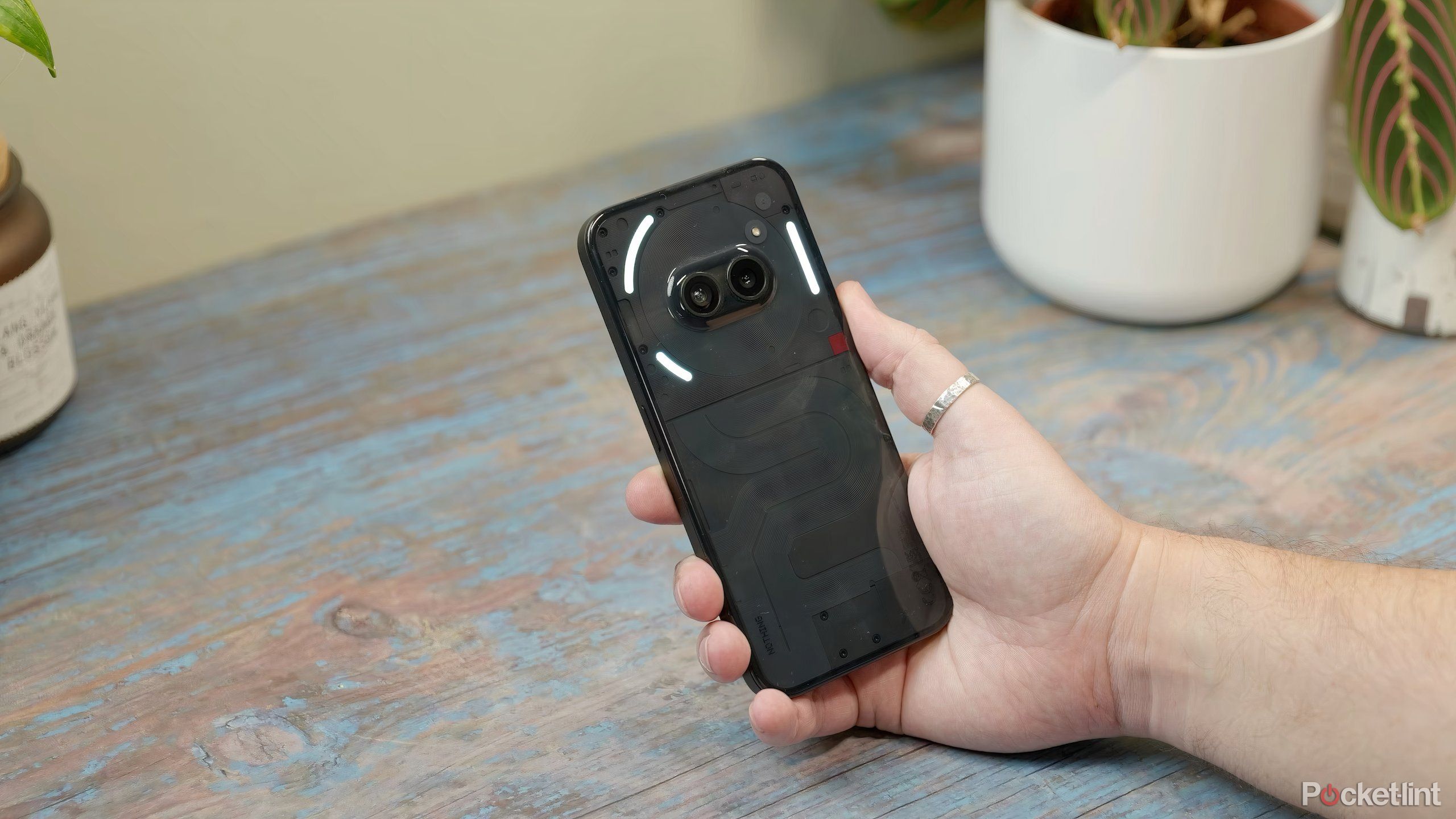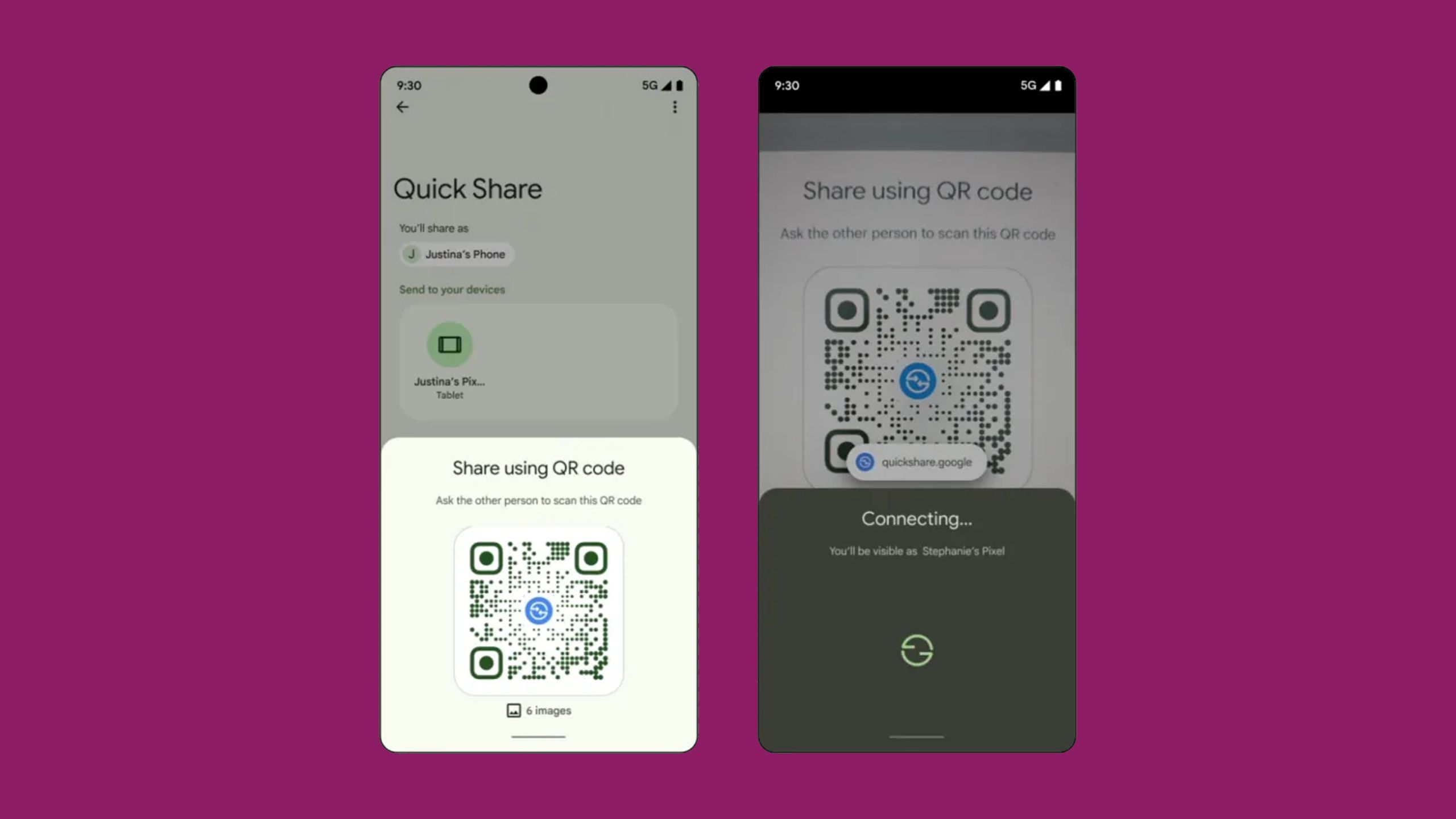Abstract
- Google’s Fast Share QR codes can get round privateness settings or gadget detection points by establishing a direct connection.
- Each gadgets will need to have Bluetooth and Wi-Fi enabled, and the receiving gadget should be operating Android 6.x or later.
- Switch(s) ought to begin mechanically as soon as a receiver scans the sender’s code.
Google Quick Share is the Android equal of Apple AirPlay, and doubtlessly a vital a part of day by day life in case you stay or work with different Android customers. It is a far quicker manner of sharing hyperlinks and recordsdata than e-mail, cloud companies, and even messaging apps. I’ve discovered this the exhausting manner — Facebook Messenger can typically lag seconds or minutes behind in delivering common messages, by no means thoughts ones with media recordsdata connected.
Not too way back, Google upgraded Quick Share with the flexibility to make use of QR codes. On this information, I am going to clarify why you’d use the choice, what you’ll want to get began, and, after all, the steps concerned within the sharing course of. In the long run, it should not be very difficult, although there are some troubleshooting steps you should use in case you run into issues.
The iPhone’s Action button is coming to Nothing phones, and I’m a big fan
It is a uncommon flash of significant enhancement on the most recent smartphones.
What are Fast Share QR codes?
And why would you utilize them?
Samsung
QR codes are a substitute for Fast Share’s regular modus operandi, which includes the originating gadget detecting close by Android gadgets, Chromebooks, and (in some circumstances) Home windows PC. In lots of conditions, there is not any cause to make use of QR codes — they might truly be slower, for the reason that individuals receiving hyperlinks or recordsdata must be immediately subsequent to you rather than throughout the room or one other a part of the constructing. In the event you’re sharing a webpage, it’d truly be quicker to indicate the individual your display screen.
The rationale for utilizing codes boils right down to one among two considerations: technical issues or privateness settings. If a recipient’s gadget is not displaying up in your share choices, QR codes can doubtlessly pressure Fast Share to work, though each individuals will nonetheless must have particular settings enabled (extra on that within the subsequent part). One thing that will or will not be an surprising drawback is privateness — if a recipient can usually solely obtain shares from contacts, for instance, QR codes will allow them to make exceptions.
On Samsung gadgets — the place Fast Share originated — the sharing course of can look just a little completely different, as seen within the photographs above. The general course of is much like vanilla Android, however be conscious of potential compatibility points, relying in your telephone and the variations of Android and One UI it is operating.
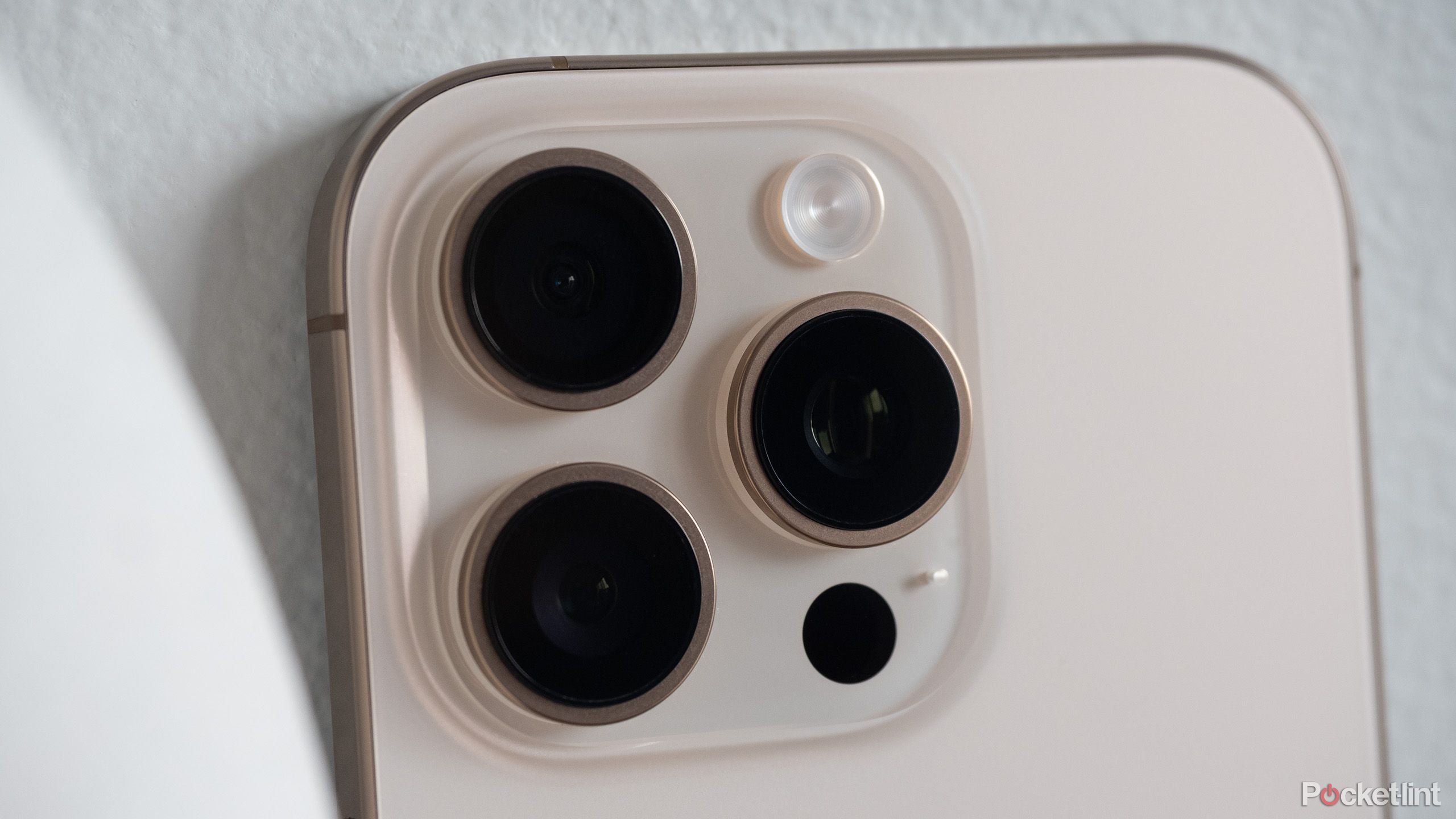
The Apple-UK encryption battle is a terrifying echo of San Bernardino
It is an extremely severe situation that might put lives on the road.
What are the necessities for Fast Share QR codes?
Nothing too difficult
At a minimal, each the sender and recipient must have Bluetooth and Wi-Fi enabled. Bluetooth is used to detect close by gadgets and set up a “handshake,” whereas Wi-Fi conducts the precise switch over a peer-to-peer connection, since Bluetooth does not have sufficient bandwidth. On Android gadgets, you’ll be able to toggle these choices utilizing Fast Settings, or else by opening the Settings app.
The receiving gadget can solely be a telephone or pill operating Android 6.x or later, in contrast to another iterations of Fast Share. It isn’t clear why, however presumably there’s some type of underlying software program structure concerned. At least, Google’s choice ensures that the receiving gadget could have a digicam (and digicam app) able to scanning QR codes.
There isn’t any inherent file measurement restrict for transfers, however be conscious that some apps could impose their very own. Regardless, it is a dangerous concept to switch something quite a lot of hundred megabytes except you need to — say, in case you’re handing a video challenge to somebody for enhancing. When you get into gigabyte file sizes, receivers could have to attend round a number of minutes or longer, and begin the switch over once more if one thing botches it.
It is safer and extra handy to make use of cloud companies or FTP transfers for big recordsdata.
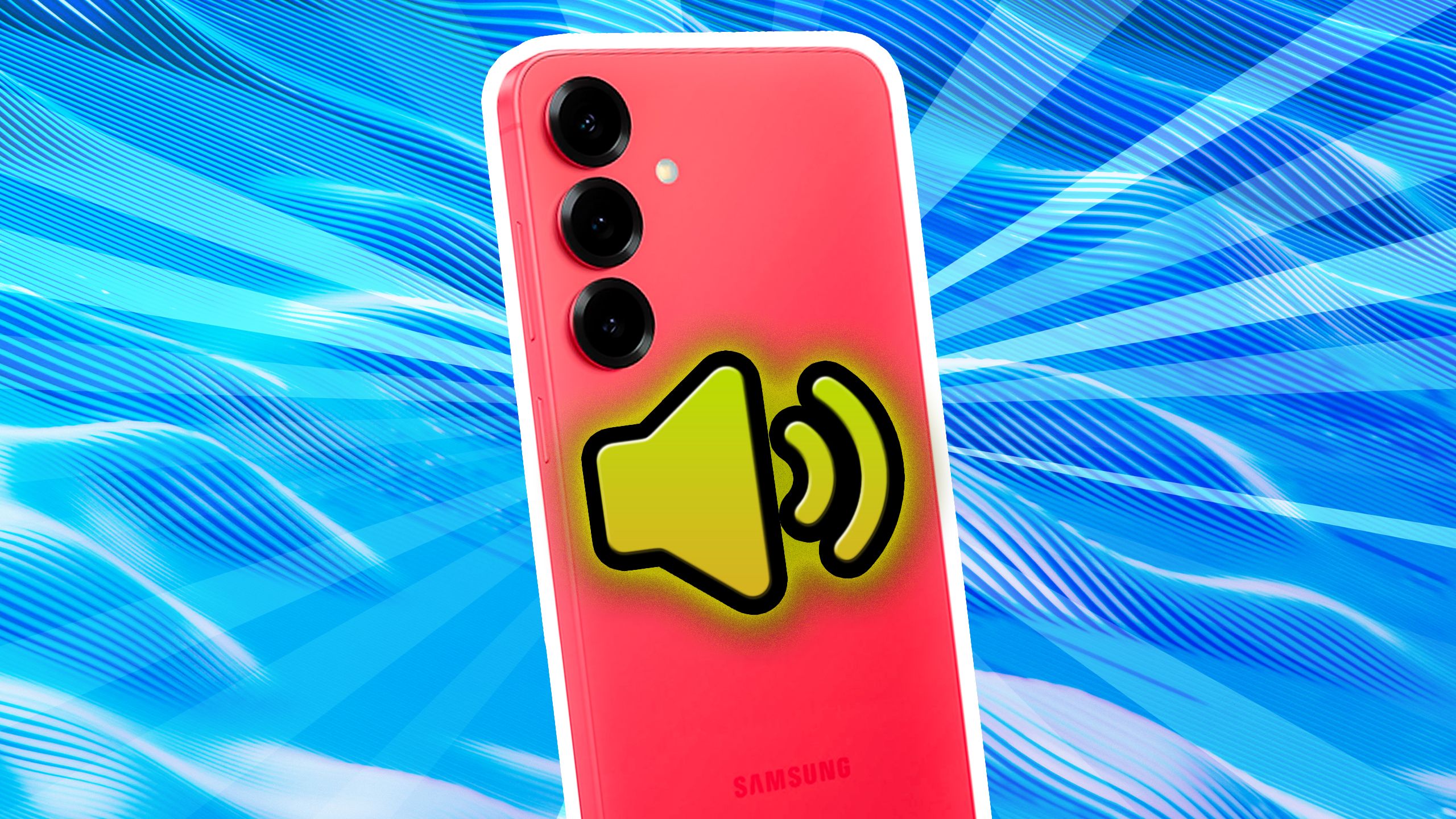
No sound, no clue? 6 ways to fix your Android phone’s audio
Most definitely, you are coping with some type of software program situation.
use Fast Share QR codes
What senders and recipients must know
Google / Pocket-lint
Here is what the sharing course of seems like on most Android gadgets:
- On the sending gadget, discover the content material you wish to share.
- Faucet the Share button. In most variations of Android, this could seem like a lesser-than image with related dots.
- Choose Fast Share, then Use QR code (or some variant of that). A code must be mechanically generated onscreen. Keep in mind, this can be a one-time code, so saving it for later will not assist.
- On the receiving gadget, open the Digital camera app, or else go to Fast Settings > Scan QR code.
- Level the receiver’s digicam on the sender’s QR code, and faucet by way of if the code does not scan mechanically.
- If the code scans accurately, the 2 gadgets ought to immediately join and begin the switch. For longer transfers, the receiver can swap to different apps with out breaking the connection — a standing merchandise will seem within the Android notification tray. You’ll be able to faucet this to return to the Fast Share display screen, or use it to cancel transfers in progress. Do not be too impatient with bigger recordsdata.
If the method does not work or stalls out, it may very well be that Bluetooth and/or Wi-Fi have been disabled. On one or each gadgets, strive opening Fast Settings and toggling Airplane mode on and off earlier than making an attempt once more.
Units operating Android 12 or earlier may must re-enable Location knowledge by going to Settings > Location and toggling Use location (or some similarly-named possibility). Whilst you’re there, make it possible for Wi-Fi scanning and Bluetooth scanning are on.
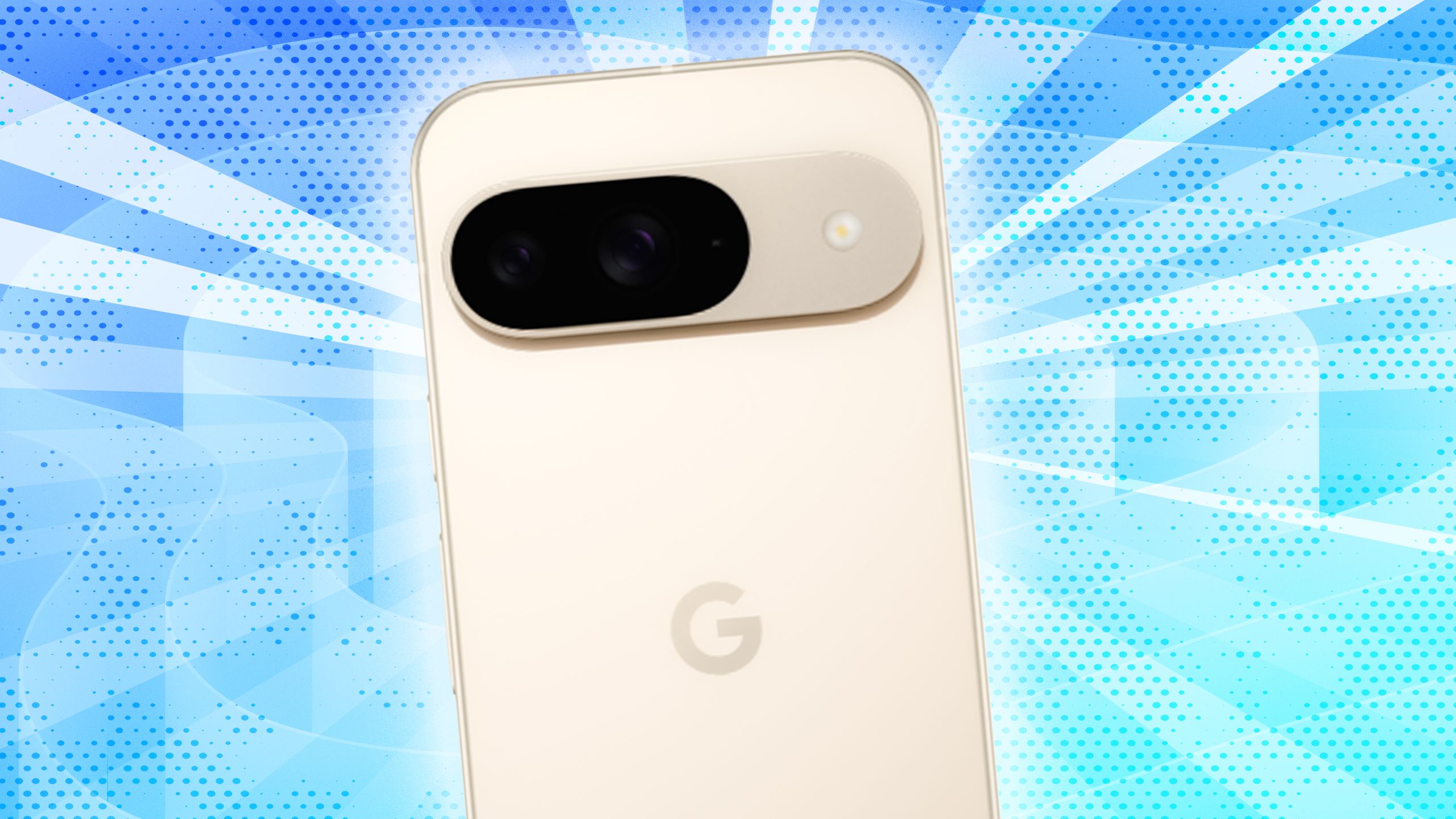
The Pixel 10 might end up being the smartphone surprise of the year
An annual Pixel refresh is about as dependable as dying and taxes.
Trending Merchandise

SAMSUNG 34″ ViewFinity S50GC Collection Ultrawide QHD Monitor, 100Hz, 5ms, HDR10, AMD FreeSync, Eye Care, Borderless Design, PIP, PBP, LS34C50DGANXZA, 2023, Black

ASUS RT-AX55 AX1800 Twin Band WiFi 6 Gigabit Router, 802.11ax, Lifetime web safety, Parental Management, Mesh WiFi assist, MU-MIMO, OFDMA, 4 Gigabit LAN Ports, Beamforming

SAMSUNG FT45 Sequence 24-Inch FHD 1080p Laptop Monitor, 75Hz, IPS Panel, HDMI, DisplayPort, USB Hub, Peak Adjustable Stand, 3 Yr WRNTY (LF24T454FQNXGO),Black

Acer Nitro KG241Y Sbiip 23.8â Full HD (1920 x 1080) VA Gaming Monitor | AMD FreeSync Premium Technology | 165Hz Refresh Rate | 1ms (VRB) | ZeroFrame Design | 1 x Display Port 1.2 & 2 x HDMI 2.0,Black

HP 330 Wireless Keyboard and Mouse Combo – 2.4 Ghz Wireless USB Receiver – Chiclet Keys, 12 Keyboard Shortcuts – 1600 DPI Multi-Surface Mouse – LED Num Lock, Caps Lock, Scroll Lock (2V9E6AA)

LG UltraWide QHD 34-Inch Pc Monitor 34WP65C-B, VA with HDR 10 Compatibility and AMD FreeSync Premium, Black

HP 2024 Laptop | 15.6″ FHD (1920×1080) Display | Core i3-1215U 6-Core Processor | 32GB RAM, 1.5TB SSD(1TB PCIe & P500 500GB External SSD) | Fingerprint Reader | Windows 11 Pro

Acer SH242Y Ebmihx 23.8″ FHD 1920×1080 Residence Workplace Extremely-Skinny IPS Laptop Monitor AMD FreeSync 100Hz Zero Body Peak/Swivel/Tilt Adjustable Stand Constructed-in Audio system HDMI 1.4 & VGA Port


